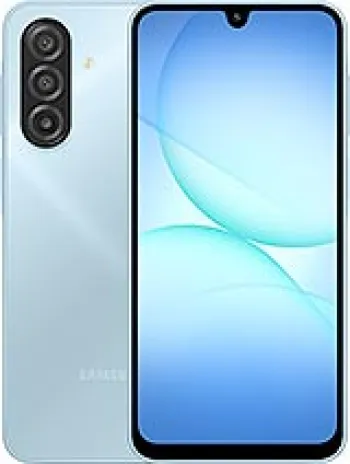
Introduction
The Samsung D700 was an innovative concept from the South Korean electronics giant, proposed to push the boundaries of smartphone technology during its era. Despite not being officially released, it showcased several interesting features that were envisioned for mobile devices at the time. This article explores the various specs and potential functionalities of the Samsung D700 based on available data, focusing on its design, technology, operating system, and more.
Network and Connectivity
The Samsung D700 was designed for GSM networks, supporting GSM 900, 1800, and 1900 bands. Its connectivity options included GPRS, allowing basic mobile internet access, a significant advancement in the early 2000s despite its limitations. Unfortunately, it lacked EDGE technology, meaning data speeds were relatively slow compared to later standards.
Launch Curve
Announced in the third quarter of 2003, the Samsung D700 was anticipated by tech enthusiasts. However, it was eventually cancelled, never making it to the consumer market. Its cancellation may have been due to the rapid evolution of mobile technology and the competitive landscape at the time, which demanded continuous innovation and adaptability.
Design and Build
With dimensions of 89 x 49 x 23 mm and a weight of 110 grams, the Samsung D700 was compact and relatively lightweight. It used a Mini-SIM card, a standard format before micro and nano SIMs became prevalent. This made it easy to handle and fit into pockets, a crucial design consideration for handheld devices at the time.
Display
Equipped with a TFT display capable of rendering 65,000 colors, the Samsung D700 offered vibrant visuals by the standards of its time. The screen resolution of 176 x 208 pixels was modest, ensuring that the fundamental visual experiences were met for tasks like viewing photos, reading messages, and navigating the user interface.
Operating System and Performance
Powered by a 104 MHz ARM 920T processor, the Samsung D700 was built on the Symbian operating system with a Series 60 user interface. This combination provided a functional and efficient platform for running applications and managing tasks, despite the limited hardware capabilities compared to modern smartphones.
Memory and Storage
The device came with 16MB of internal storage, which could be expanded via an MMC card slot. This was a crucial feature in a time when application data and multimedia files were becoming more prevalent. However, the memory limitations meant users had to manage storage carefully, typically prioritizing essential applications and media.
Camera Capabilities
Equipped with a VGA camera (0.3MP), the Samsung D700 was designed to capture basic photos and videos. While today's cameras boast ultra-high resolutions, the D700's camera was seen as a significant feature in an era where mobile photography was still in its infancy.
Audio and Sound
The absence of a loudspeaker and 3.5mm headphone jack reflects the device's focus on compactness. Instead, it supported vibrations and polyphonic ringtones for alerts. The lack of a speakerphone limited its functionality for hands-free communication, a feature that would become standard in later mobile phone generations.
Communication Features
The Samsung D700 did not support modern connectivity options like WLAN or Bluetooth. However, it featured an infrared port, allowing for data transfer with compatible devices—an innovative solution at the time. Proprietary USB connection facilitated data exchange with computers, extending the device's usability for transferring media and other files.
Additional Features
The device included basic applications such as a clock, alarm functionality, and a WAP 2.0/xHTML browser. These features offered users essential tools for daily productivity and limited web browsing capabilities, catering to the increasing demand for integrated mobile solutions.
Battery and Power Management
A removable 800 mAh Li-Ion battery powered the Samsung D700, offering up to 110 hours of standby time and up to 4 hours of talk time. An extended 1200 mAh battery was also planned, though details on its actual availability are scarce. Battery management was crucial, emphasizing the need for efficient usage to maintain availability throughout the day.
Conclusion
Although the Samsung D700 never made it to market, it embodied the aspirations of early 2000s mobile technology, showcasing innovations that would lay the groundwork for future developments. Its design, connectivity options, and hardware were reflective of the challenges and possibilities of its time, offering insights into the evolution of the smartphone industry. As a concept, it serves as a fascinating snapshot of the mobile technology landscape during a period of rapid change and innovation.
Key Features of Samsung D700
- GSM Technology with 2G bands (GSM 900 / 1800 / 1900)
- Compact dimensions: 89 x 49 x 23 mm (3.50 x 1.93 x 0.91 in)
- Lightweight design: 110 g (3.88 oz)
- TFT Display with 65K colors and 176 x 208 pixels resolution
- Symbian OS with Series 60 UI
- 104 MHz ARM 920T CPU
- Expandable storage via MMC card slot
- VGA main camera with video capabilities
- Polyphonic and WAV downloadable ringtones
- Infrared port for connectivity
- Removable Li-Ion 800 mAh battery with up to 110 h standby time and up to 4 h talk time
- WAP 2.0/xHTML browser
- Supports basic features like Clock and Alarm
Disadvantages of Samsung D700
- Device status: Cancelled, never released to the market.
- Lacks support for EDGE network technology.
- Small internal memory with only 16MB.
- No WLAN for wireless internet connectivity.
- No Bluetooth support for wireless file transfer.
- No GPS capabilities for navigation.
- Loudspeaker is not available.
- No 3.5mm headphone jack for standard audio connection.
- No FM radio functionality.
- Limited to a VGA main camera, which offers low resolution.
- No selfie camera available.
- Proprietary USB port instead of a standard one.

View Also
More Phones
All Rights Reserved +14266 Phones © Mobilawy 2025

























